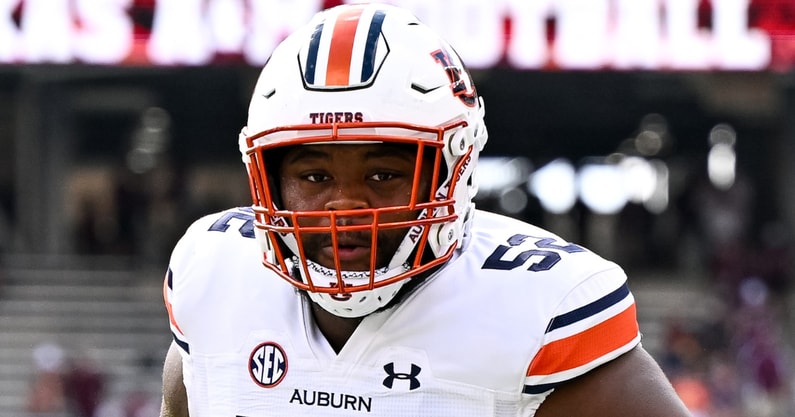Dallas Cowboys select Justin Rogers in seventh round of 2024 NFL Draft

Justin Rogers has reached the pros after four seasons at two programs in the Southeastern Conference. That comes after the Dallas Cowboys selected the defensive tackle in the seventh of the 2024 NFL Draft.
Rogers spent three years at Kentucky before transferring and spending last year at Auburn.
While in Lexington, Rogers appeared in 33 games and totaled 61 tackles, five going for loss, and three sacks. Then, in his one year on The Plains, he posted 17 tackles, two for loss, and a lone sack.
Add it all up and that’s 78 tackles, seven tackles being for loss, and four sacks with the Wildcats and Tigers.
Rogers played high school football at Oak Park in Michigan. He was a four-star prospect and the No. 44 overall recruit in the 2020 cycle. That’s according to the On3 Industry Ranking, a weighted average that utilizes all four major recruiting media companies. He also rated as the No. 6 DL in the class and the top player out of his state.
Rogers was productive at his pair of stops in the SEC. That effect will now come to Dallas as he now gets an opportunity on their defensive line.
What NFL Draft analysts are saying about Justin Rogers
NFL.com’s Lance Zierlein says Rogers is as advertised when it comes to being a prospect. At 6’3 and 330 pounds, he’s a defensive tackle that’s going to close up gaps in the line and compete well against opposing offensive lines.
“Rogers is a “what you see is what you get” nose tackle with a girthy build and film full of fistfights where he gives as well as he gets,” Zierlein wrote. “He’s built low to the ground and plays with a terrific anchor to ward off block finishes and stay on his feet. He has decent length for his size but not enough to consistently shed blocks, despite possessing the power to stack single blocks.”
“Rogers is a drain-clogging nose capable of muddying the A-gaps for teams looking for depth and help slowing the run,” wrote Zierlein.